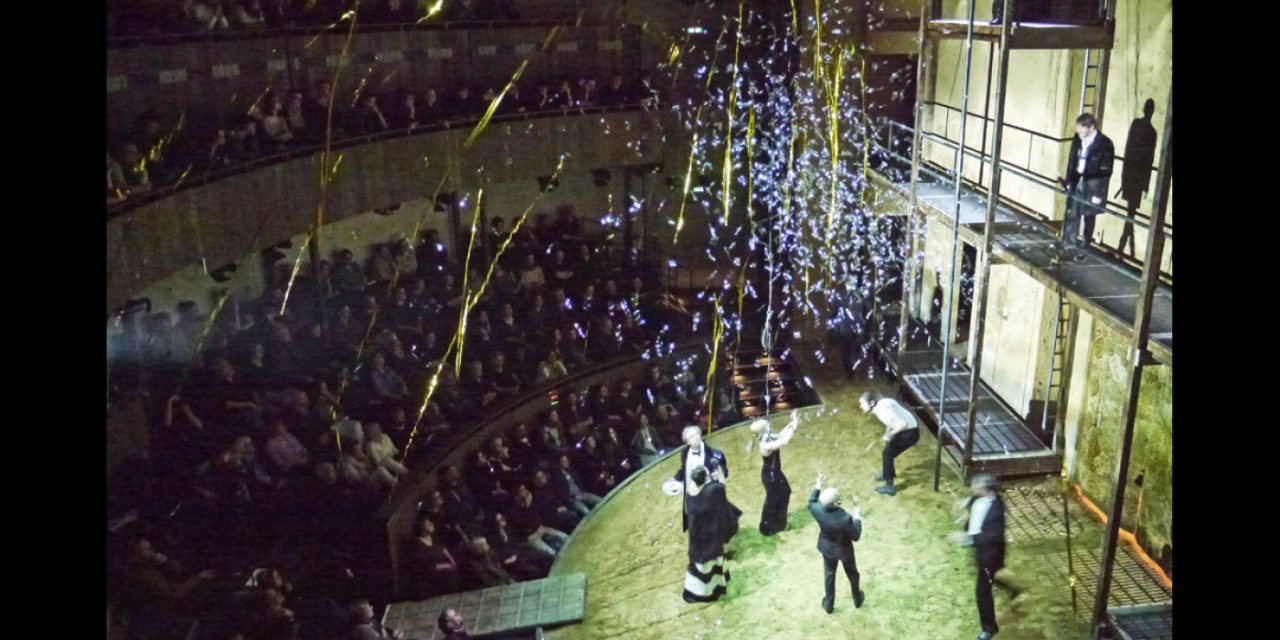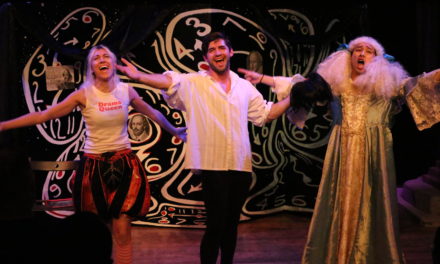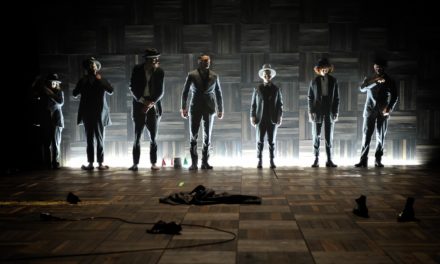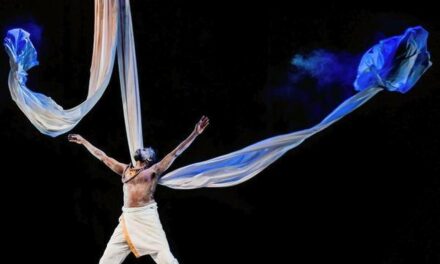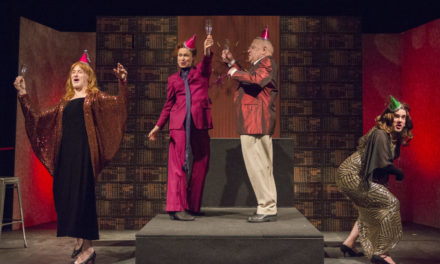It is the second year for West Kowloon Cultural District and Edward Lam Dance Theatre to host the What Is Stage workshop event. This year’s theme is “From Text to Space” and they invited renowned German theatre designer Jan Pappelbaum from the Schaubühne Berlin, a long-term collaborator of the theatre’s artistic director Thomas Ostermeier.
Same as last year, a public seminar as an introduction to Pappelbaum was hosted by Edward Lam in early June before the private workshop in July, having participants to study nine productions designed by Pappelbaum for the Schaubühne. In early August, Pappelbaum came to Hong Kong and hosted a four-day artist workshop with selected participants, and ended the event with another public seminar.
From my experience last year, the immense success of What Is Stage: Dynamics Of Seeing, with Belgian theatre scenographer Jan Versweyveld sharing his personal views and experience in creating the stage of his “emotional reality” for all Ivo van Hove’s productions, even though I did not go through the whole process of Pappelbaum this year by only attend both public seminars, I can feel that what Pappelbaum had given to us theatre artists is as powerful as what I immersed myself from Versweyveld’s intimate dialogue.
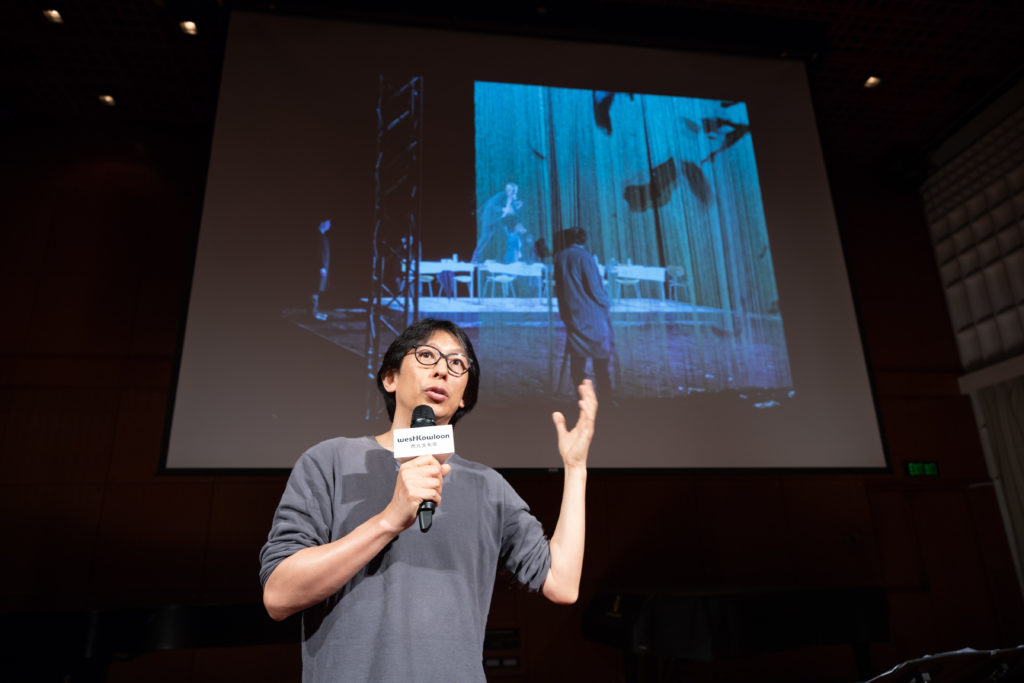
Edward Lam in Public Seminar 1. Photo Courtesy: West Kowloon Cultural District Authority
Once again, Lam introduced Pappelbaum and his works to us in June not only through his own interpretations but boldly, yet also cleverly, gave us a mini-lecture on the history of the Schaubühne and theatres in Berlin as well. The reason why Lam wants to open this year’s What Is Stage by doing so is because, in order to know Pappelbaum’s world and methods for his design, we need to know his influence. Unlike Versweyveld who clearly wants to create a space that speaks his own terms about the material performed, Pappelbaum to me is more on the level of serving the texts. This is not a discouraging statement on Pappelbaum’s work as lesser art, but in fact, a compliment on how Pappelbaum still thrives as a theatre designer when realism is what he holds on to.
Studied at Bauhaus-Universität Weimar, Pappelbaum is highly influenced by the Bauhaus spirit: “Man Equals Man” (from the pivotal work by Bertolt Brecht). It suggests that nothing is useless, not only on stage but also in the creative process, that every part and member to join forces and create the artwork is equally important. According to Lam, Pappelbaum designs not as a designer but as an architect. One important role of Pappelbaum at the Schaubühne, apart from being a scenographer, is to be the “Leiter der Ausstattung,” which can be loosely translated in English as the “Manager of Facilities” of the theatre. In a sense, Pappelbaum manages the theatre in practical terms. The building and the performing spaces should be “a space to play,” and in order to do that, “how it functions” (both in his scenography to a production and in the theatre’s own architecture) is the Pappelbaum main focus.
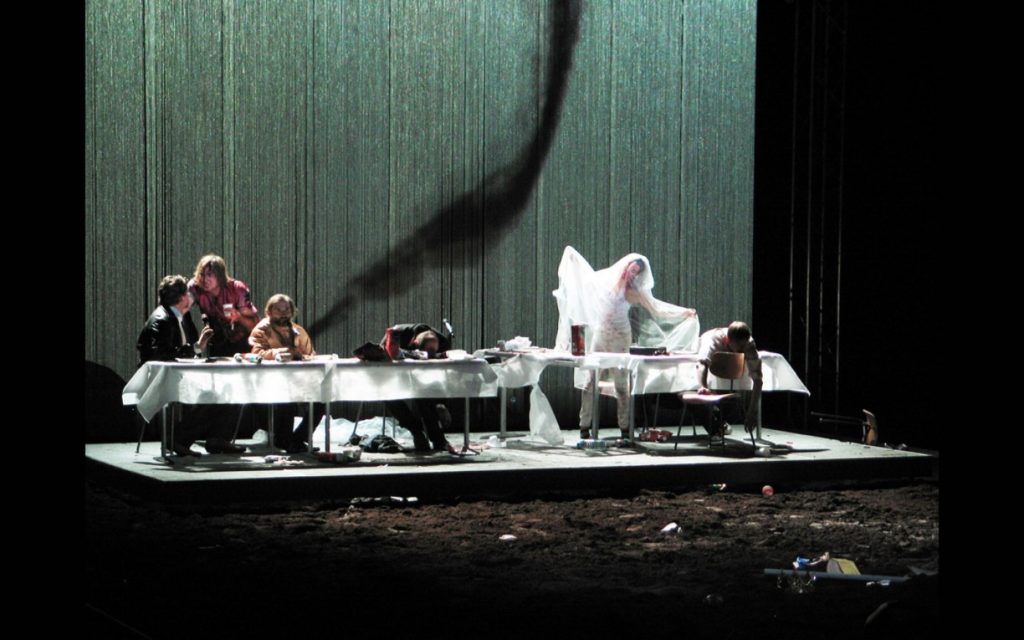
Hamlet. Dir. Thomas Ostermeier. Photo: Jan Pappelbaum.
No doubt when Lam showed the audience the production stills of Hedda Gabler, Nora, Hamlet, Richard III, and A Midsummer’s Night Dream in the first public seminar, he slowly led us to really think more on the materials Pappelbaum used in these productions. Why is Nora designed with Barcelona chairs? Why in Hedda Gabler, Pappelbaum uses transparent materials that are reflective? Why Hamlet is a soil ground while Richard III, done in a then newly renovated theatre, designed as a homage to the Shakespeare Globe in London with only 200 seats, is covered with sand? One can interpret the meaning behind of Pappelbaum’s choice on the materials to the text, but more importantly, it is Pappelbaum’s sensitivity on texture that makes his stage unique and powerful.
To me, Pappelbaum is a designer who does not design realism on stage but professes the spirit of realism as a method to create his stage. In his lecture for the second public seminar after the artist workshop, Pappelbaum reveals that he really emphasizes on the “history” of the materials that are put on stage. Nothing is simulated, i.e. to make everything brand new. All materials are brought in to create such space for the actors to play. Pappelbaum believes that the “history” of the materials gives power to the actors’ performances, as well as to support the vision of a particular production. However, as an architect, Pappelbaum never delves into the reading of his designs. In short, he rarely chooses a material because it represents something to the text or the play. The materials he chooses mostly are to solve problems in order to support the vision of a production, which is distinctively from the director and the dramaturg.
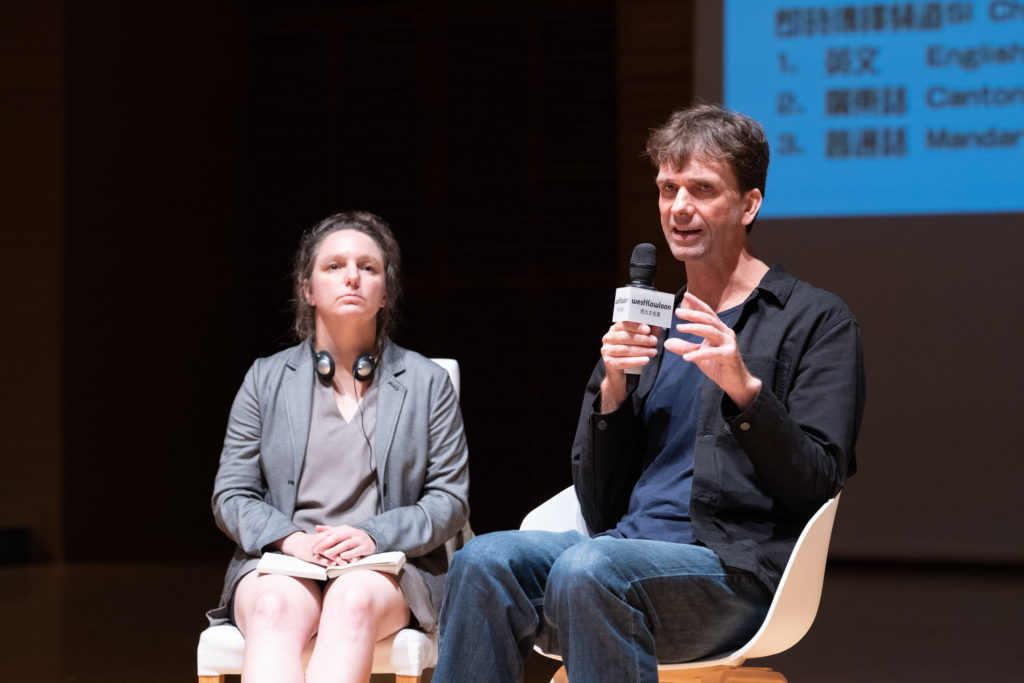
Jan Pappelbaum (right) in Public Seminar 2. Photo Courtesy: West Kowloon Cultural District Authority
In his lecture, Pappelbaum reminisced and explained his career in the past 20 years. His lucid energy tells me that he is a humble designer whose talent is exceptional to the world right now. What he has created (even for me who could only see photos of his designs) is vastly emotional but also balanced with a hint of reason, the reservation on revealing the designer’s ego when the production, the play itself is the most important thing to be seen. Pappelbaum did not get tired to stress the idea of “Gesamtkunstwerk,” or in English “Total Work of Art” during his lecture. Not only this idea of an artwork was started by the legendary German composer, but it is also what Pappelbaum continues to strive in his career, to humbly serve the arts with one own’s talent.
What Is Stage: From Text To Space by West Kowloon Cultural District & Edward Lam Dance Theatre
Public Seminar 1: Introducing The Work Of Jan Pappelbaum – 10th June 2018 at Recital Hall, the Hong Kong Academy for Performing Arts
Public Seminar 2: Jan Pappelbaum’s Aesthetics Of Scenography – 10th August 2018 at the Hong Kong Jockey Club Amphitheatre, the Hong Kong Academy for Performing Arts
This post was written by the author in their personal capacity.The opinions expressed in this article are the author’s own and do not reflect the view of The Theatre Times, their staff or collaborators.
This post was written by Clement Lee.
The views expressed here belong to the author and do not necessarily reflect our views and opinions.

